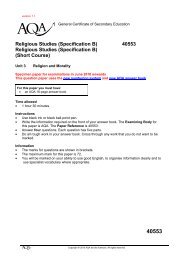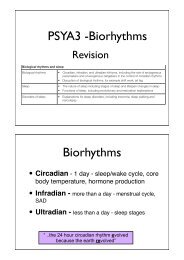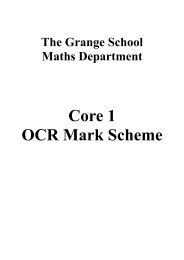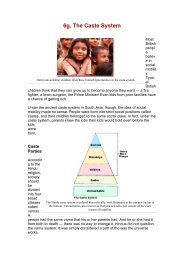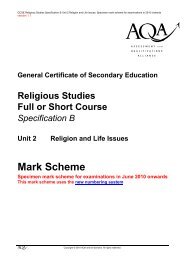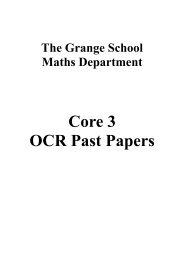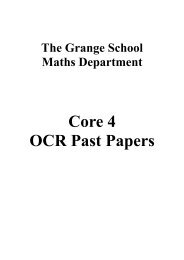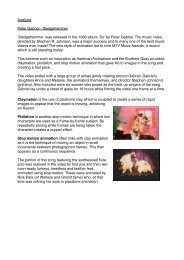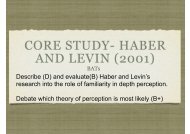C2 Past Paper Booklet - The Grange School Blogs
C2 Past Paper Booklet - The Grange School Blogs
C2 Past Paper Booklet - The Grange School Blogs
Create successful ePaper yourself
Turn your PDF publications into a flip-book with our unique Google optimized e-Paper software.
June 200921 <strong>The</strong> lengths of the three sides of a triangle are 6.4 cm, 7.0 cm and 11.3 cm.(i) Find the largest angle in the triangle. [3](ii) Find the area of the triangle. [2]2 <strong>The</strong> tenth term of an arithmetic progression is equal to twice the fourth term. <strong>The</strong> twentieth term ofthe progression is 44.(i) Find the first term and the common difference. [4](ii) Find the sum of the first 50 terms. [2]3 Use logarithms to solve the equation 7 x = 2 x+1 , giving the value of x correct to 3 significant figures.[5]4 (i) Find the binomial expansion of (x 2 − 5) 3 , simplifying the terms. [4](ii) Hence find (x 2 − 5) 3 dx. [4]5 Solve each of the following equations for 0 ◦ ≤ x ≤ 180 ◦ .(i) sin 2x = 0.5 [3](ii) 2 sin 2 x = 2 − √ 3 cos x [5]6 <strong>The</strong> gradient of a curve is given by dydx = 3x2 + a, where a is a constant. <strong>The</strong> curve passes through thepoints (−1, 2) and (2, 17). Find the equation of the curve. [8]7 <strong>The</strong> polynomial f(x) is given by f(x) = 2x 3 + 9x 2 + 11x − 8.(i) Find the remainder when f(x) is divided by (x + 2). [2](ii) Use the factor theorem to show that (2x − 1) is a factor of f(x). [2](iii) Express f(x) as a product of a linear factor and a quadratic factor. [3](iv) State the number of real roots of the equation f(x) = 0, giving a reason for your answer. [2]© OCR 2009 4722 Jun09



